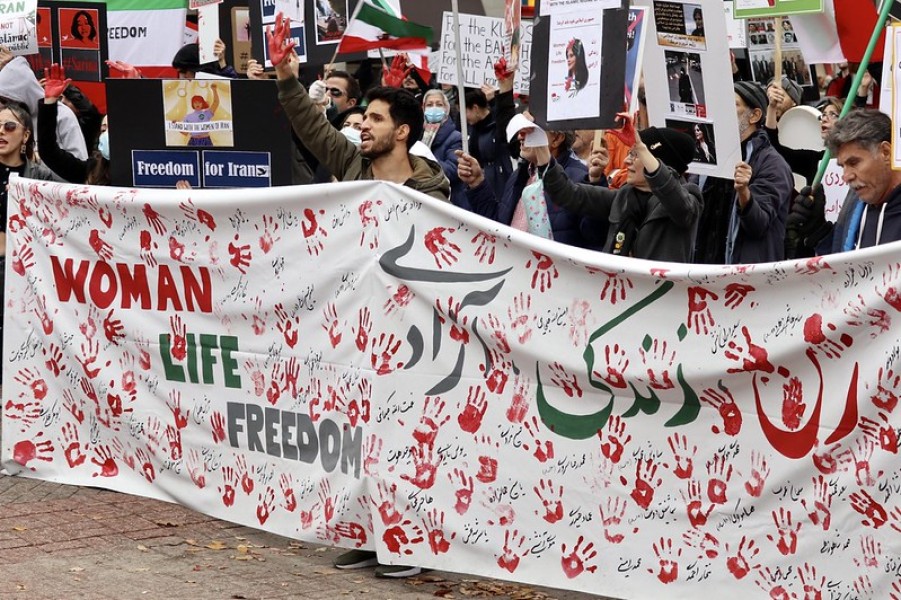For 112 years, International Women’s Day has marked a time to celebrate the achievement of women and raise awareness about gender inequality. On March 8th, this year’s campaign of #EmbraceEquity will shine a spotlight on women’s contribution to various fields, while highlighting the challenges they face in other industries. Eliminating the barriers to women’s access to economic, political, and social resources is fundamental to creating and maintaining a stable democratic society. Often at the core of repressive regimes is a systematic effort to exercise control over the lives of women. Similarly, an erosion of the rights of women in “stable” democracies is often a harbinger of a broader attack on the rights of citizens.
The events in Iran over the last five and a half months are a reminder that women’s bodies are often a terrain upon which repression and conflict take place, while women are often the first to put their lives on the line to demand change. On September 13th, Mahsa Amini was arrested for the manner in which she was wearing her hijab, which was considered improper by the morality police. She was taken to their headquarters for an “education and orientation class,” and three days later she was dead.
In response, people took to the streets in what became the country’s largest protests since Iran’s 2009 Green Revolution. News reports and social media were filled with images of female protesters burning their hijabs. The protesters rallying cry of “Women, Life, and Liberty” quickly evolved from being about a demand to end the compulsory hijab to one for gender equality.
The forced wearing of the hijab is symbolic of the Islamic Republic’s repression of anything and anyone that is deemed a threat to its hold on power. Under Tunisia’s dictatorship, the hijab was also site of political oppression. However, it was banned by the secular government as a way of punishing those who they considered to be a part of the political opposition. The women who refused to let the state govern how they expressed their religious beliefs were subjected to a variety of violations. Similar to the protests in Iran, women and youth were the driving force behind that country’s 2011 demonstrations, which led to the toppling of Ben Ali’s regime.
The Iranian government’s brutal response to the protests, which has resulted in the killing of more than 500 protesters, the detention of at least 19,000, and countless numbers tortured, has eroded the movement’s momentum but has not completely brought it to a halt. Women have sparked a battle for change, proving once again that women’s rights are at the heart of efforts across the globe to advance justice and democracy.
__________
PHOTO: Mahsa Amini's death sparked protests around the world in solidarity. (Taymaz Valley/Flickr)

